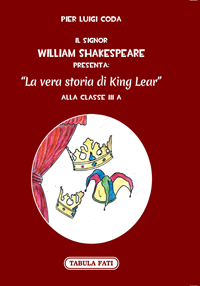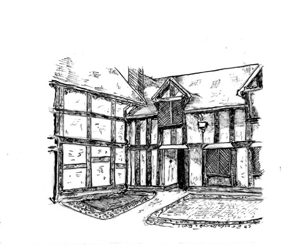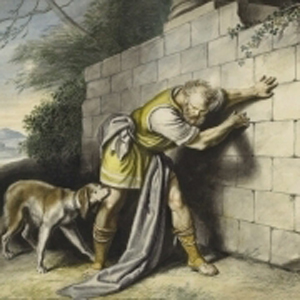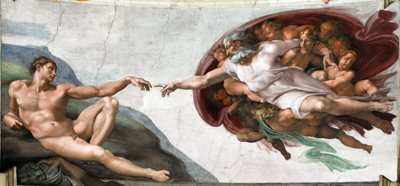 |
Mr. William Shakespeare presents
"The true story of King Lear"
to the third grade A
Illustrations and translations by the author
(Tabula Fati - Solfanelli - Chieti)
|

Inner courtyard of Shakespeare's birthplace
|
After Julius Caesar, an imaginary William Shakespeare presents the tragedy of King Lear to the same class of III A. On this occasion the meeting takes place in the courtyard of his birthplace in Stratford-upon-Avon, during a splendid sunny day. |
The boys are rather bewildered by the dramatic complexity of the tragedy and the apparent (or substantial) abandonment of the characters in a dark desert without justice and humanity. Cruelty, perfidy and ingratitude seem to be the most evident ingredients that run through the scene of a ruthless world devoid of light, scourged by a stormy sky where madness and wisdom, blindness and vision overlap in a whirlwind of chaotic confusion.
|
 Inner Hall of Shakespeare's Birthplacee
Inner Hall of Shakespeare's Birthplacee
|

William Dyce - King Lear and The Fool in the storm
Scottish National Gallery - 1851
|
Since its first performance on Boxing Day in 1606, there have been countless theatrical, editorial and cinematic re-editions that have taken place all over the world over the years. But act after act, the boys and girls are increasingly fascinated by the expressive power of the individual characters and by the surprising tangle of opposing relationships, often thickened with violence and enigmatic conjectures.
|
Sums will be drawn in Dover even if, to get to Dover while the storm is raging, it takes a lot of courage. You have to face the risk of falling and find the strength to get up but you have to get there at any cost, perhaps groping in the dark. Dover is the destination, the dream, the final landing towards which each of us sails.
|

Johann H. Ramberg - "Go thrust him out at gates, and let him smell his way to Dover" - 1829 - Folger Collection
|

The Cliffs of Dover
|
Here, from the top of the white cliffs overlooking the sea, one can gaze upon the infinite and discover the value of our universe in the basement of existence: joy and pain, ferocity and pity, hatred and love, death and salvation. Perhaps, but it is not said, an impalpable divine breath
|
Once again, Shakespeare's magical pen takes care of conquering the students once again, managing to envelop everything in the mysterious meanders of life and being, painting a grandiose literary fresco worthy of Michelangelo's Sistine Chapel or, as has been pointed out, of the most beautiful Beethoven symphonies. |
 Michelangelo Buonarroti - The Last Judgment (detail) Vatican City - Sistine Chapel - 1535 - 1541 Michelangelo Buonarroti - The Last Judgment (detail) Vatican City - Sistine Chapel - 1535 - 1541
|
King Lear is repeatedly held to be Shakespeare's finest work, the tragedy in which he most fully displays his many powers; and if we were destined to lose all but one of his plays, probably most who know him would like to keep King Lear. (Andrew Bradey)
The tragedy of King Lear is deservedly the most exalted. Perhaps there is no other work that holds our attention so fixed, that agitates our passions so much and captures our curiosity. (Samuel Johnson) |
|

